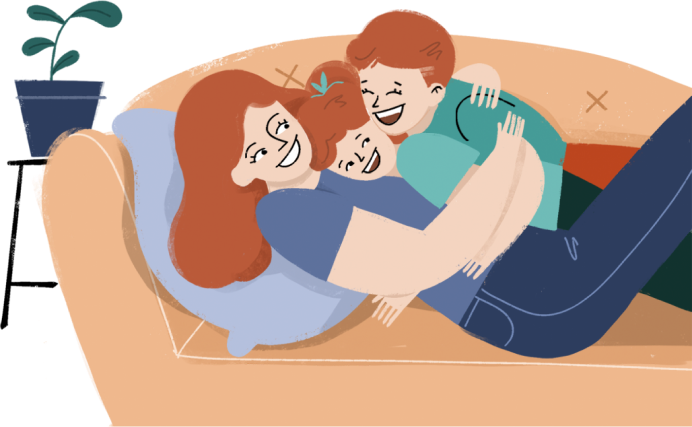As many women know, thinning hair isn't something just men have to worry about.
In fact, the American Hair Loss Association claims it's even trickier to address for females:
Hair loss in women isn’t always as straightforward as it is in most men. In men about 90 percent of all cases are caused by hereditary male pattern baldness. In women, however, hair loss can be triggered by a multitude of conditions and circumstances.
That definitely doesn’t make me feel super confident when it comes to my own follicles. But since stress is one of the many causes they list, it’s important not to let panic overwhelm you if you notice more strands falling by the wayside than usual.
Take a look below to learn more surprising facts about the causes and treatment options women (and men) have for thinning hair.
And don't forget to SHARE all the information with your friends on Facebook!
Thumbnail Photo: YouTube / june penny
1. It Could Be Temporary

According to the American Hair Loss Association, some women are misdiagnosed with permanent hair loss and prescribed treatment, which will actually make it last longer.
They list pregnancy and certain medications as the frequent culprits for these cases. Luckily, once the real problem is discovered, the normal pattern often grows back. Stress is another huge factor, so panicking at the first sign is only going to make things worse.
2. There Aren't Many Internal Treatment Options

Pharmaceutical companies aren't testing many medications geared specifically toward female hair thinning, and doctors are reluctant to prescribe those they do.
The U.S. National Library of Medicine lists only one treatment approved by the US Food and Drug Administration: minoxidil, a topical treatment applied directly to the affected area.
3. Genetic Factors Can Come From Both Parents

Although male pattern baldness is only tied to the maternal side of the family, the Bernstein Medical Center for Hair Restoration explains how the chances are doubled for women with follicles being affected by the DNA they inherit from both Mom and Dad.
4. It's Probably Caused By A Very Specific Hormone

AHLA explains how it's only been in the last couple of decades that research has been able to pinpoint what exactly causes both male and female pattern baldness.
For years, the source was believed to be high testosterone levels, but it's actually the conversion of that hormone into dihydrotestosterone (DHT) that causes follicles to shrink and become uninhabitable for hair.
5. Make Sure You're Getting Plenty Of Protein

Protein deficiency from crash diets can cause the strands to fall out when your body shifts the protein, or keratin, ordinarily used to keep them in place, to other parts of your body that have become more desperate, according to WebMD.
6. There's Something Called A "Hair Pull Test"

It's not as aggressive as it sounds, but gently tugging or running your hands through a section of your hair can help indicate early signs of potential hair loss.
Using a section of roughly 100 strands (no need to actually count), you can count how many strands fall into your hand. The normal range, according to AHLA, is one to three strands per pull.
7. Don't Skimp On Washing

There's a trend that claims washing your hair sparingly will help maintain its strength — and it's understandable that someone with thinning hair would be hesitant to overly apply product to the follicles, including shampoo.
Actually, regular washing at least every other day is essential to the overall health of hair. According to Hair Loss for Women, the only issue to look out for is shampoos that include harsh sodium lauryl sulfate (SLH).
8. It Could Indicate Serious Health Problems

Apart from being annoying all on its own, female hair loss can be the first sign of any number of ailments such as:
- under-active thyroid
- anemia
- polycystic ovarian syndrom (PCOS)
- lupus
If you notice a persistent change in your level of hair loss, you might want to make an appointment for a checkup with your doctor. It could be totally unrelated, but it’s always better to be safe than sorry.
9. Tight Ponytails Can Also Be To Blame

Known as traction alopecia, the tension of certain hairstyles can cause what AHLA calls "localized trauma," which can deteriorate follicles. If this is caught early enough, however, the hair can regrow.
10. There Are Several Remedies That Actually Work

If you're not interested in the FDA-approved minoxidil treatment for thinning hair, you might want to try one of the more natural remedies, such as biotin pills, mildly massaging the scalp to stimulate blood flow, and gently applying jojoba oil to the area.
Were you surprised by any of these important facts about female hair loss?
Be sure to SHARE the information with your friends on Facebook!




